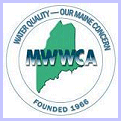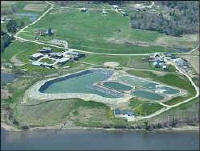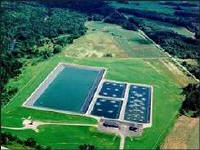|












2003
Maine Wastewater Salary Survey as conducted by the Maine Wastewater Control
Association

2003 Maine
Wastewater Rate Survey conducted by the Maine Rural
Water Association

Maine DEP Monthly
O & M Newsletter
Maine and WEF's
Operation Forum
Penobscot Watershed and Development of a TMDL
EPA Binational Toxics
Strategy
Maine Rural Water
Association
Maine Wastewater
Operator Certification
Guide
Maine Is Technology
Newsletter
Maine
Wastewater Control Association

Maine
Wastewater Engineering
Firms
| |
Matters of Perspective (Part 1 - pH)
by
Tim Loftus
For those of us who work in technical fields, such as in the applied sciences or
in engineering, we often find ourselves surrounded by numbers. Over the course
of months or years we grow comfortable comparing results to standards or
evaluating whether these numbers fall within certain ranges, but during this
time we c an often lose sight of the significance of these numbers. How much,
really, is a microgram? How fast is the speed of light in practical terms?
Sometimes it is best to look at the scale of measurement in terms that are
easier to visualize. For this article I will focus on pH.
The concentration of the hydrogen ion in a water solution is basically measured
in powers of ten and its value is represented as a pH number. The pH scale
ranges from 0 to 14, although the practical use of the scale is from 2 to 12. A
pH of 7 is considered neutral. However, this does not mean that hydrogen ions
are not present – they are – but in a very tiny amount. At a pH of 7, the
hydrogen ions (which carry a positive charge) equal the amount of hydroxide ions
(which carry a negative charge). As the pH value decreases below 7, the
characteristics of the solution become governed by the acid component (hydrogen
ion, H+). Conversely, as the pH increases above 7, even though hydrogen ions are
present in miniscule amounts, it’s the base component (hydroxide ion, OH-) that
governs the solution’s characteristics.
For every whole number pH decrease on the pH scale, there is a ten-fold increase
in the active acid component of the solution. As mentioned before, a “neutral”
pH of 7 still has a tiny acid component. At a pH of 6, the acid component
concentration is ten times more than at 7. A pH of 5 has 100 times the
concentration of hydrogen ions than a solution at pH 7. pH 4 is 1000 times, and
a pH of 3 has 10,000 times the hydrogen ion concentration.
In this imperfect example of measuring pH in terms of distance, where you are
right now is considered pH 7, neutral. A pH 6 would be ten yards away. A pH 5
would be the length of a football field away. About 0.6 miles away you’d find a
pH of 4. Travel 5.7 miles and you will find the pH 3 marker. To reach a pH of 2,
you would need to travel 57 miles from your “neutral” position of pH 7. By
putting the pH scale in terms of distance, it is easy to visualize how acidic a
solution can be.
Unpolluted precipitation has a pH of 5.65 (carbon dioxide dissolves in the water
and creates a tiny amount of carbonic acid which gives a pH of 5.65). Any
precipitation that has a pH lower than this is classified as acid rain. Using
the distance analogy, the active acid component in normal rainwater would cover
a distance of a little more than ten yards. We test the rainwater at my facility
and several times it was found to have a pH of 3. That’s about six miles of an
active acid component that shouldn’t be longer then 10+ yards. No wonder why
statues and gravestones, especially marble ones, are slowly dissolving with each
rainstorm. It also helps to understand why the neutralizing capacity of the land
and surface water is often overtaxed, leaving many localized ecosystems sterile,
especially in northeastern US and Canada.
The next article will cover units of weight typically used in the environmental
field: milligrams and micrograms.
By the way, the speed of light is 186,000 miles per second. That is equivalent
to 30 round trips from Boston to San Francisco in one second.
If you have any questions, suggestions, or comments, contact NEWEA Lab Practices
Committee Chair Tim Loftus at (508) 949-3865 timloftus@msn.com. For more
information on the NEWEA Laboratory Practices Committee, please contact Tim
Loftus or Elizabeth Cutone, NEWEA Executive Director, 100 Tower Office Park,
Woburn, MA 01801, (781) 939-0908, ecutone@newea.org.
|

